This article comes to us from guest contributor, Rhys Pogson Hughes Emanuel, a prolific and extremely active member of the Black Powder Epic Battles community. Some of you may recognise his input from the lively Epic Facebook movement where he has been supporting the game across the Epic Warlords, Warlords Epic Battles ACW, Epic Battles Warlord Games, Warlord Games Epic Battles Napoleonic and Warlord Games Black Powder Epic Battles groups. He humbly encourages you to check out these extremely active groups and join the extensive online community!
Rhys: Hello WG Community, I was recently honoured to be asked to write a few articles about my Epic journey to date. My name is Rhys, and I am a serving member of the British Armed Forces. More importantly, however, I am a lifelong miniature hobbyist and became an Epic Battles wargamer almost immediately upon laying my eyes on that first sprue that came free with Wargames Illustrated, a couple of years ago. I have recently completed both Union and Confederate forces (five brigades each) for the American Civil War, and I am neck-deep in both the French and Allied armies for the Waterloo Campaign.
For this series, I thought I would start with the Union, the collection I finished first. I achieved a personalised look from what might be considered a very uniform force, which led me to actively seek how flexible the Epic Battles figures can be through conversions and painting solutions.
Although I like to think my units have all become individually unique through my efforts, I didn’t just jump in and start snipping off heads and applying left-field paint schemes – it starts with planning. As a non-US national, once I had committed myself to collecting ACW I sat down and did some research. I wanted to capture a hint of that Hollywood feel, the same kind that has been known to spark international interest in the conflict, but I also wanted everything I did to be based on actual history. Osprey Publishing’s books were a great resource to start, but I quickly moved to many broader reference materials such as the American Civil War Source Book and ACW Battlefield Tactics. Although not great as painting guides, they did reveal to me the true variety of units available beyond the oft-pictured grey and blue uniforms, and greatly influenced how I wanted my own units to look. These finds were a very important step in my process, as those images gave me a solid framework to design my units around.
I, like many, settled on a three-base Battalion as my core unit. I wanted to create a broad spectrum of Union forces, representative of regular, volunteer, state and militia units, that would have that universal Federal Blue look at a distance, but be distinct close-up, paying homage to the bespoke character of the real soldiers who served in those units. To achieve this, I wanted to keep the units broadly representative of actual battalions, but with each given a little conversion tweak. Thus, my many journeys down research rabbit holes and conversion experiments began.
I started with some regular units; these were not to be of particular battalions, but to represent the larger state. I chose New Jersey, Vermont, New York Irish and of course Massachusetts. I used some basic techniques; different blanket rolls between units, white straps or black, blue diamonds on the headdress or a gold badge, different hats etc. The Irish had a touch of green colouring, and to represent the battalions of Massachusetts some of the troops were painted as African-Americans.
Some stands I wanted with only kepis (caps with flat circular tops and a peak), these were made by snipping the sides and rear off the wide-brimmed hats, and using a file to smooth off the remainder. Hey presto, a full unit of kepis! The overall look of the uniforms is ‘uniformly’ Federal, but each unit has a unique unifying signature.
If you also remove the front from the wide-brimmed hat/kepi, you get a Glengarry-type shape. With a little tartan and some green stuff at the back to represent ribbon, you can represent the 79th NY.
Across many of the units, to help add more variety and individual character I added more complex conversion techniques. My favourite two were head swaps and senior non-commissioned officers (SNCOs). Adding an SNCO between the ranks not only added individuality but if positioned at the very extremity of the base helped fill the small gap between the strips on one base to the next when viewed from the front – creating a more continuous line. This was achieved by either snipping the last figure from a spare strip or using a similarly-scaled proxy and adding it to a base.
The head swaps are a little fiddlier, but after some trial and error very achievable. I snipped the neck from both front and back, if necessary cutting between the head and the rifle first with a modeller’s saw. After filing down the surfaces the new head can be glued on.
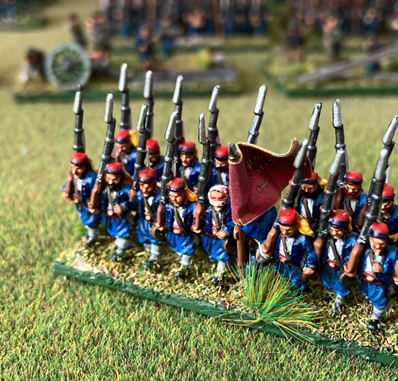
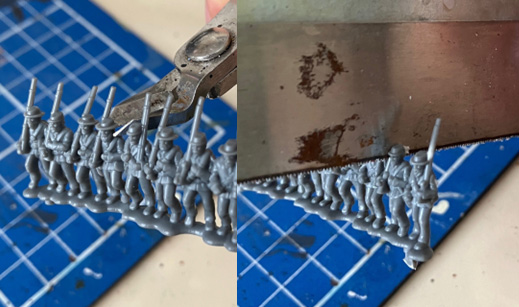
Ever wanting to create work for myself, I drilled a hole in both the neck and head and pinned the two together with some wire as well to make sure of solidity.
For added fun, there are some ‘colourful’ third party figures available which I also added to maximise variety.
Complex conversions with Epic Battles figures aren’t always required to create variety. Below are my Wisconsin & Michigan Iron Brigade and Union Marines. These are created by nothing more than changing the paint schemes between similar figures.
A similar technique was used for my Federal Zouaves. For these I wanted each stand to ‘stand alone’, so I could group them into Zouave Battalions or attach them as individual companies to my other Battalions to make four-base Black Powder Units. This allowed me to represent six different units: Boston, NY Jaeger, Duryee’s NY and three other NY/Pennsylvania Zouaves.
Beyond this, I did get carried away and exchanged a few heads. Especially to represent turbans, kepis, straw hats and havelocks that were also worn. The heads either come from spare Epic Battles strips, or from a 3rd party manufacturer which produces a line of heads in true 15mm specifically for this purpose.
One of my favourite Union conversions was the Minnesota 90-day volunteers. This was easily achieved with a simple paint scheme, but a few choice substitutions and head swaps to a mostly wide-brim hat unit all but completed the effect. To finish that early war feel, I converted all the kepi heads, using ‘green-stuff’ on the rear to create a havelock.
For my skirmishers, I went for a combination of regulars and sharpshooters. The figures were so good no conversions were really needed, but I did expand and pimp the bases to make them stand out a little.
I particularly enjoyed painting the Union cavalry. I only wanted three units, two mounted and one dismounted. This made variety easier, so I made one of the mounted units and the dismounted unit without any conversion work. To differentiate the other mounted unit, I created the Butterfly Hussars. This was mostly achieved via the paint scheme, but I also removed the front peak from the kepi to finish the effect.
That leaves the guns. For my artillery I wanted to represent three separate batteries, with a mix of small calibre, smoothbore and rifled barrels between them. For the uniforms, I took inspiration from across the varied state and volunteer units, where many had slight, but noticeable differences in their dress code. I did some partial head swaps too, this is where I snipped off the head but glued it back on the same figure at a different angle, a very simple way to add variety between gun crews. But mostly I fell into my favourite trap with Artillery bases of creating mini dioramas. Although I did snip and move some of the figures around, the bespoke nature was created by individualising the bases… if you have guns, go crazy, I say.
I needed six commander bases for my force. I maximised the commander sculpts available I used every sculpt in the Epic Battles: ACW range but did resort to converting other figures and using spares and leftovers to bulk out the bases. This provided plenty enough variety to make each base look interesting in its own right, without having to go too overboard with conversions. Nonetheless, commander stands are a perfect opportunity to create little dioramas and inspiring leaders for your force!
And there musters the North. I am very happy with how they turned out. Although I have probably put more effort in than is strictly required to make it unique, I’m happy with what I achieved. It feels right, looks right and as an added bonus, fits exactly into half of one of those really useful boxes – storage being the true enemy of all wargamers.
I hope this article has inspired you to experiment with your own modelling, or at least provided an enjoyable insight into another collector’s project. Next time, I will show you how I developed my Confederate army, which features some conversions which are a little more in-depth. The Epic Battles strips are a lot more flexible than they may first appear. All you need is a little imagination – or enough research! I am happy to discuss in detail anything I have presented, either here (comment below! -ed.) or in one of the FB groups linked at the head of this article. Good luck with whatever you are working on.
by Rhys Pogson Hughes Emanuel
Inspired? Get started with the Gettysburg Battle-Set
This is the ultimate way to get started with Epic Battles, with two massive armies in colour-coded plastic (including brand new plastic zouaves, cavalry, dismounted cavalry & skirmishers) the aforementioned MDF scenery pieces and just about everything you need to get playing the American Civil War on the epic scale it deserves. The Gettysburg Battle-Set contains:
- Union army (blue plastic) – 8 infantry regiments, 1 zouave regiment, 1 cavalry regiment, 1 dismounted cavalry regiment, 1 skirmishers regiment, 8 cannon & 8 mounted commanders
- Confederate army (grey plastic) – 8 infantry regiments, 1 zouave regiment, 1 cavalry regiment, 1 dismounted cavalry regiment, 1 skirmishers regiment, 8 cannon & 8 mounted commanders
- Green plastic bases for all figures
- A5 Black Powder rulebook
- 36-page American Civil War background, scenario and supplemental rule booklet
- Flag sheets for both Union and Confederate forces
- Laser-cut MDF farm building
- Laser-cut MDF Snake fences
- Six D6 dice
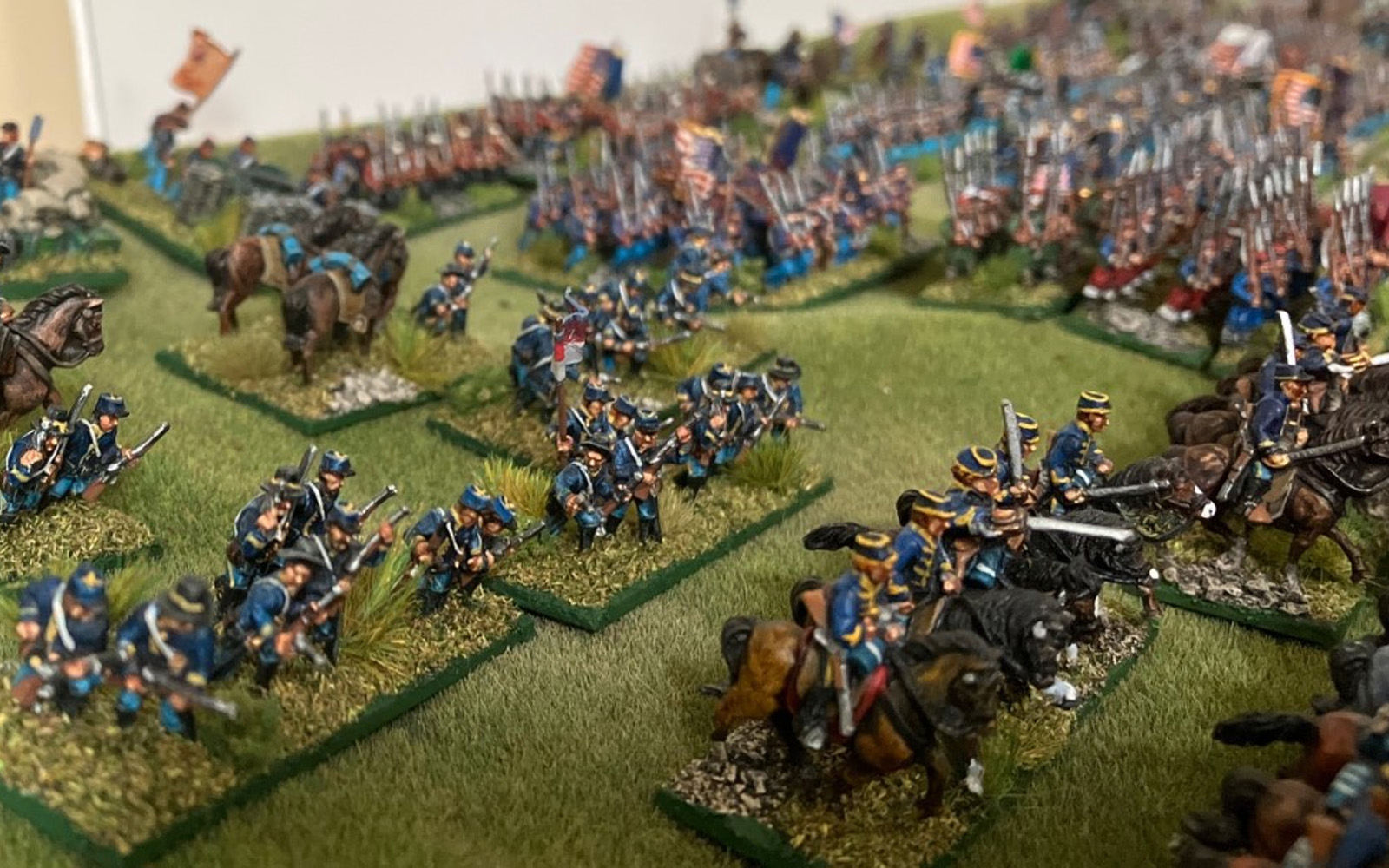

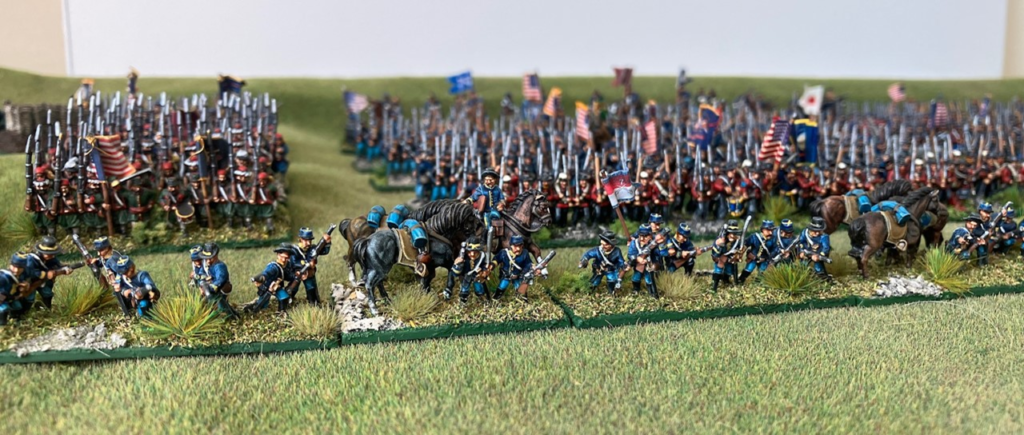

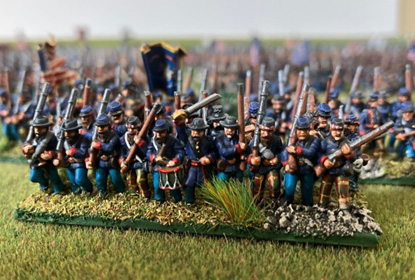
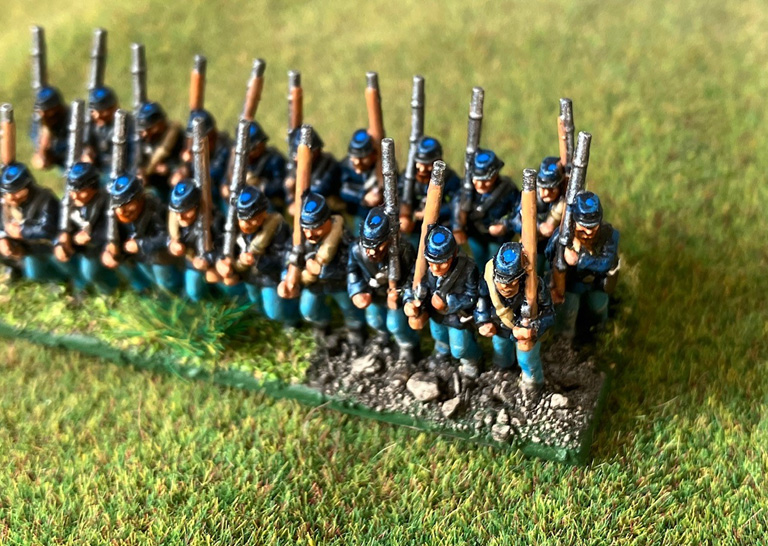
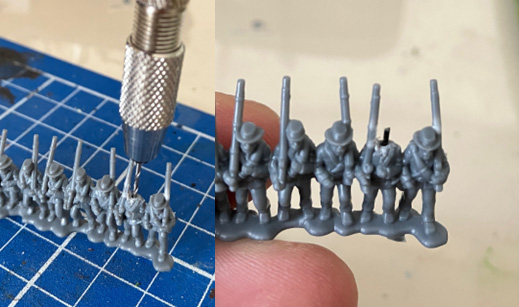
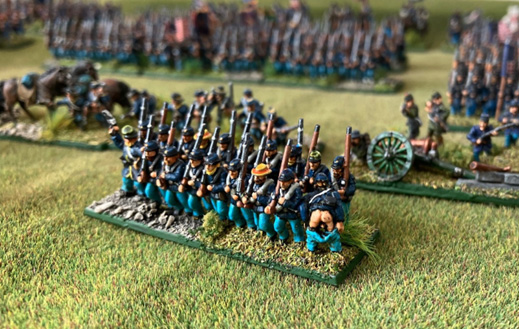

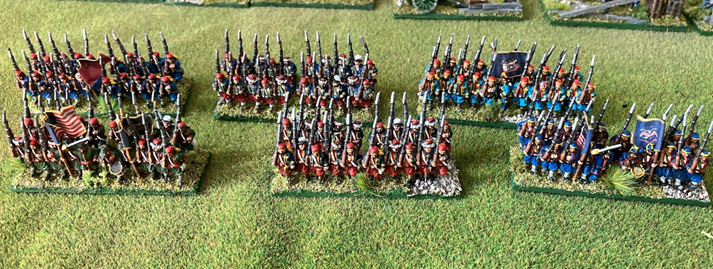
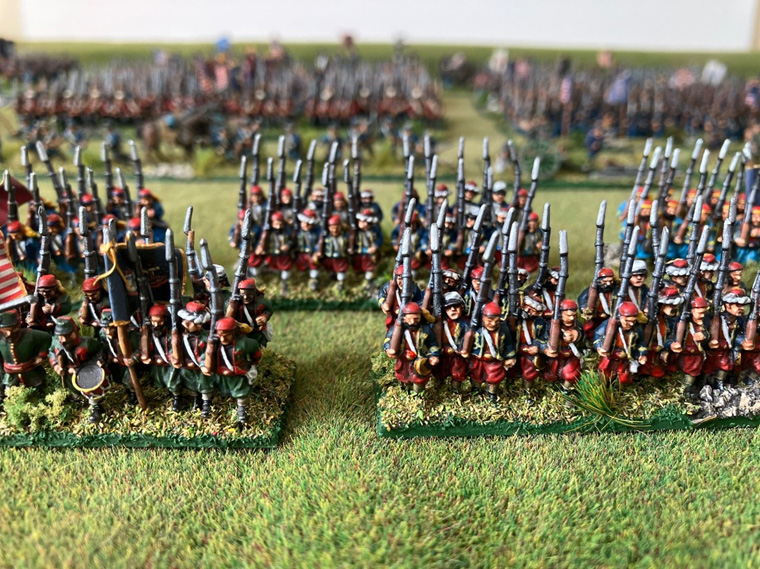
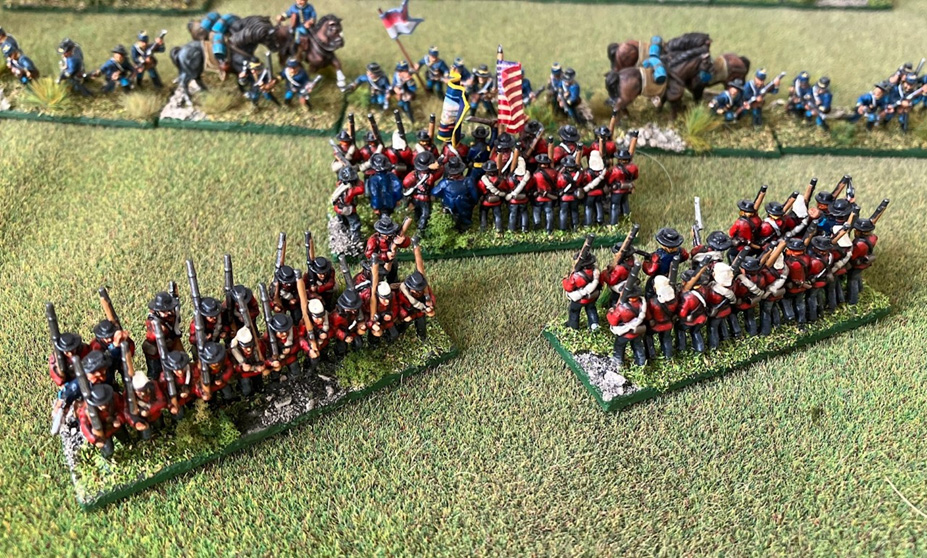
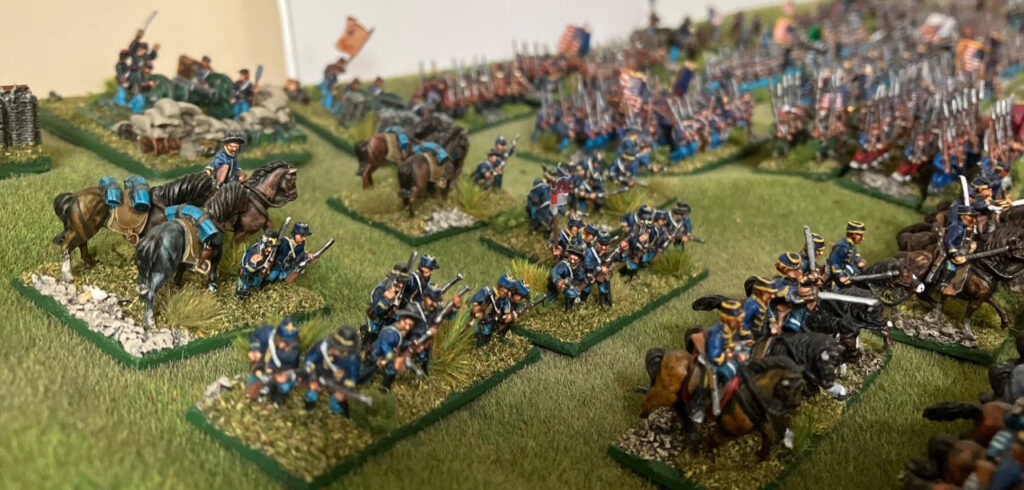
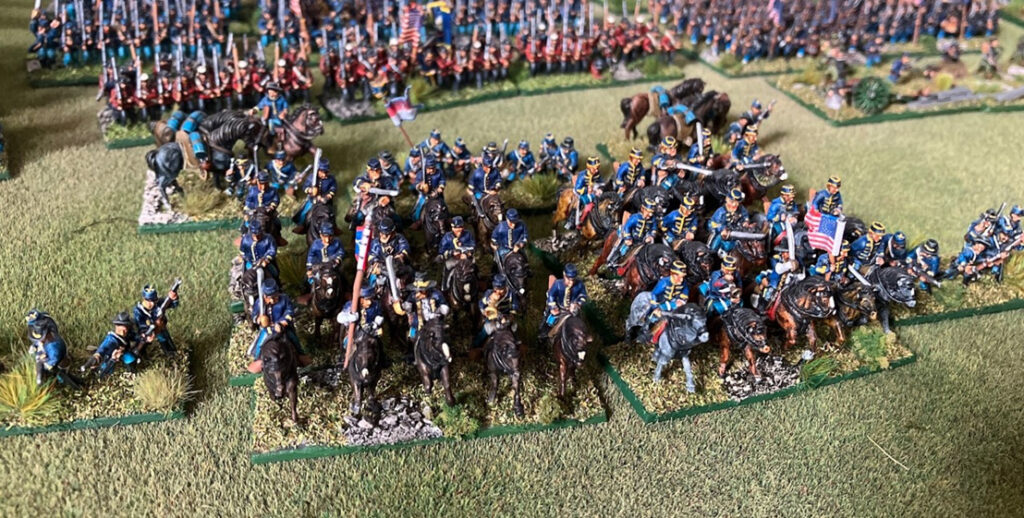
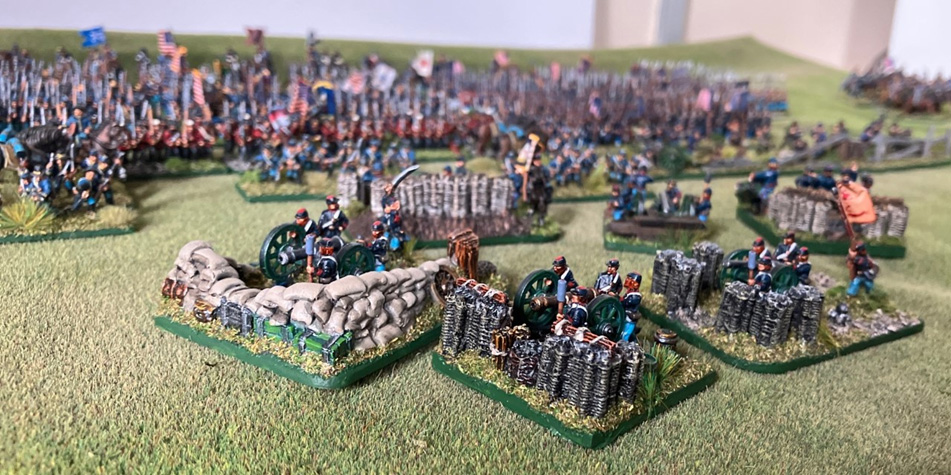
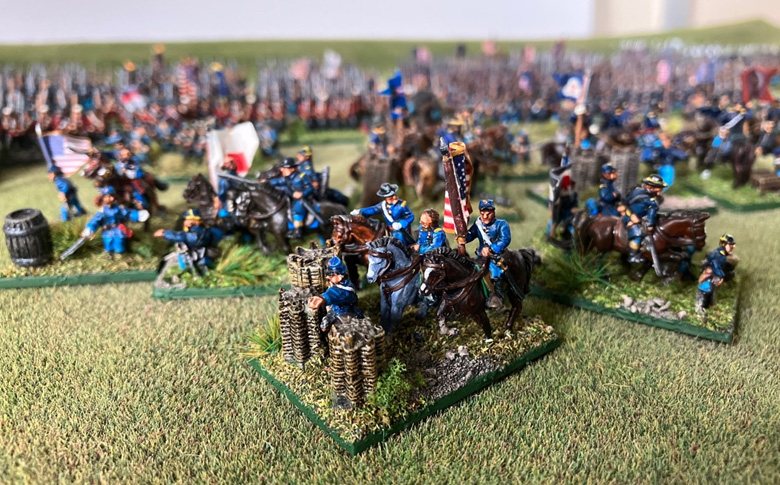
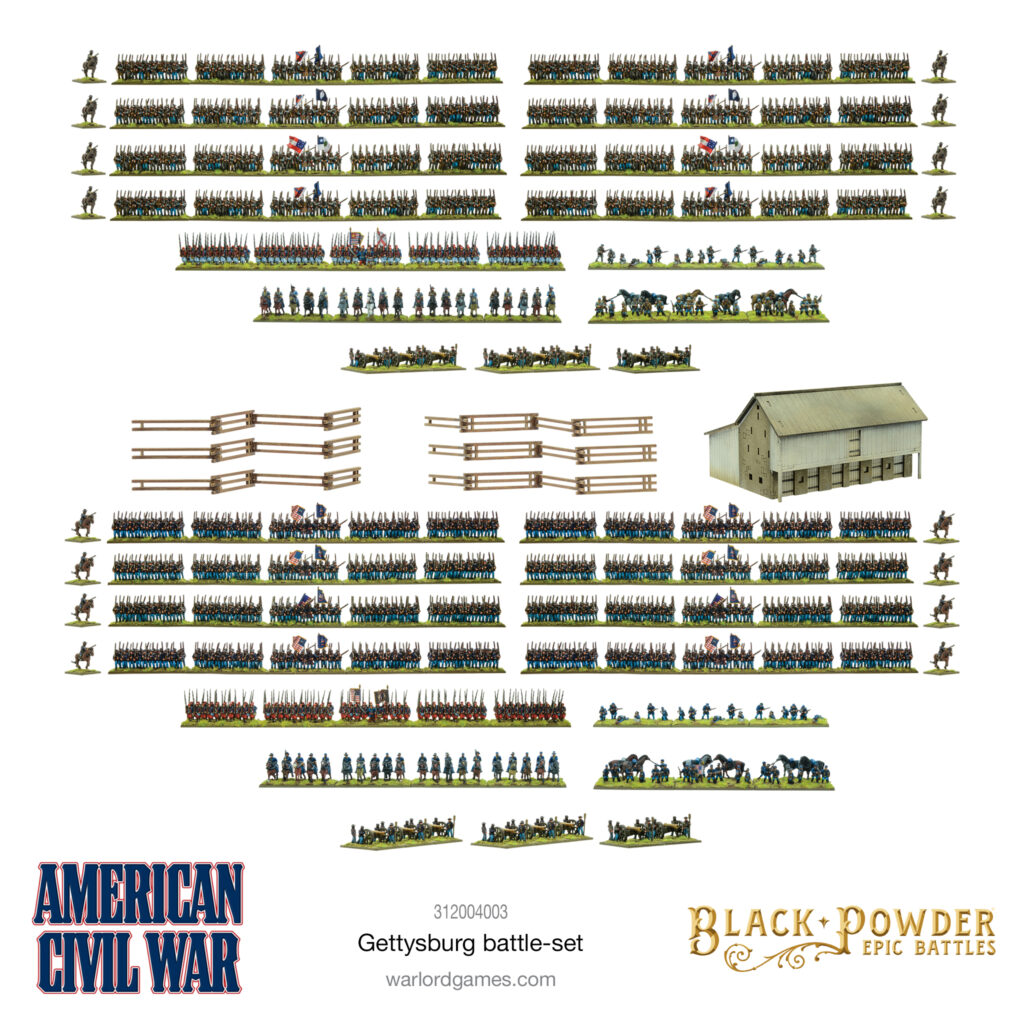
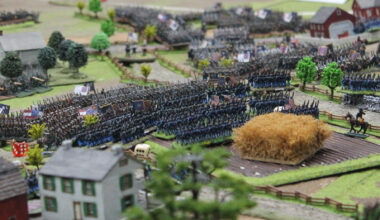
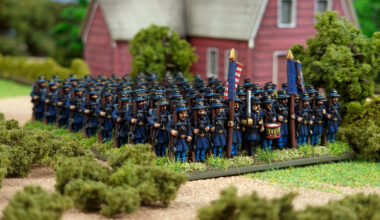
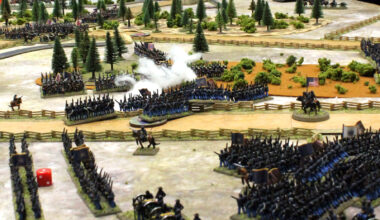
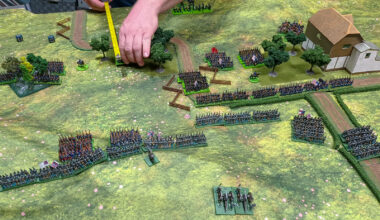
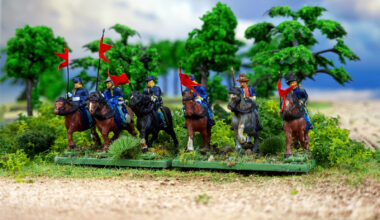
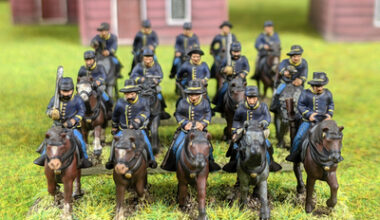
6 comments
Great and inspiring article – thanks Rhys!
My pleasure!
Great idea on the trimming of the round hat into a kepi. bugged me the Union forces were not all kepi, but now a simple conversion to fix that.
Tom
And it is very easily done!
Fantastic job. I’m working on my Union army now, so this is great timing. I’m excited to see your Confederates.
Do let me know if anything ends up of use. Good luck!
Comments are closed.